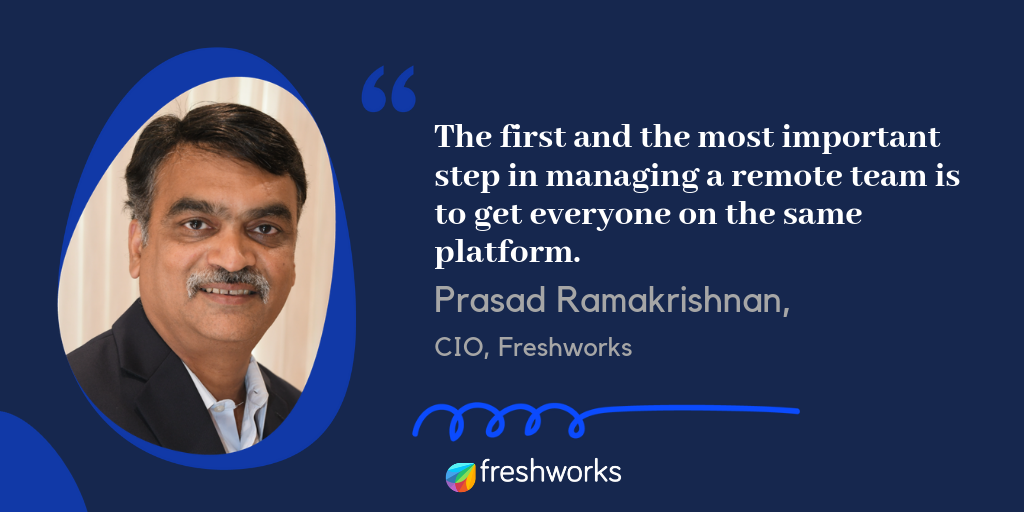Uncomplicate – How to manage remote IT teams
Uncomplicate by Freshworks brings you crisp and insightful videos which will focus on answering one tactical question around sales & marketing, support & collaboration, employee engagement, and growth.
Remote working is now ‘in’, particularly in the B2B world. We see distributed teams across companies of all kinds showing that they can be productive and impactful.
Companies like Zapier and Buffer are redefining the way products are built and marketed. (Shameless plug: if you want to learn about how these companies go about creating their partnerships ecosystem or manage their, you can read them here and here.)
We, at Freshworks, too have several employees working remotely from our offices across six countries.
Among many other challenges, IT support becomes quite complex when you have people working from different countries/regions.
We sat down with Prasad Ramakrishnan, CIO of Freshworks to get some hacks on how to manage remote IT teams.
Here’s his two golden nuggets:
1 company, 1 platform, lesser hassle
The first and the most important step in managing a remote team is to get everyone on the same platform. It is a hassle to have employees from different organisation raising tickets, and interacting with sysadmins on different platforms. In such a case, you’re not going to have any visibility of the entire picture unless you log into every single system. And that’s perfect recipe for a disaster.
“What you need is a single pane of glass as an IT leader, and you see how the SL A’s are between the various locations,” Prasad says.
In fact, having remote IT teams can be turned into an advantage to have better employee experience. Having remote IT teams means there’s definitely going to be timing overlaps. That could allow you to hand tickets off to the person nearest to the current timezone. It’s called ‘follow the sun’ model in IT.
So, being on a single platform will also ensure you provide the highest degree of employee experience.

Metrics, Metrics, and Metrics
The second important aspect of managing remote IT teams is managing the service desks with a combination of metrics, and taking the IT service desk metrics with a pinch of salt.
The major pitfall with metrics especially when it comes to remote IT is that they tend to be skewed positively towards locations where IT teams are stationed. As a sysadmin if you’re focussing on SLAs in only one particular location, then you’re creating a myopic effect. You might be compromising on employee satisfaction by ‘over serving’ folks from one region, Prasad pointed out. So if you have a remote IT team, make sure you keep this in mind.
Any other quick tips or hacks? Let us know in the comments section below!



